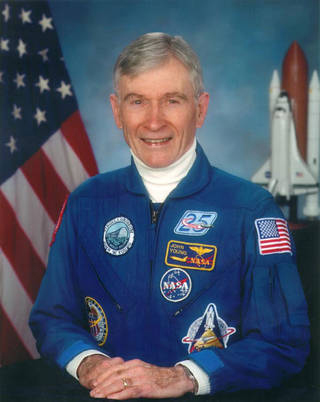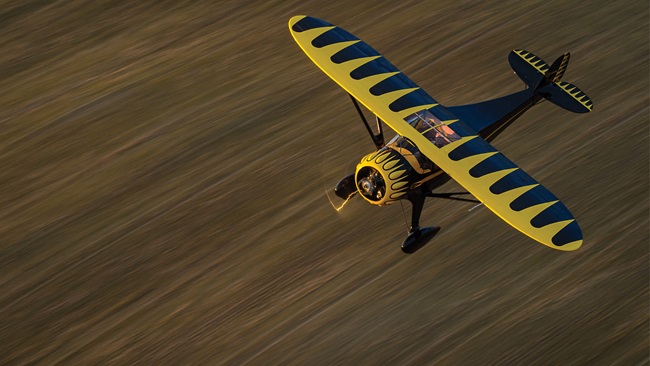John Young was pioneer among astronauts
John W. Young, whose career as an astronaut spanned “three generations of space flight,” and included two trips to the moon, a moon walk, and flying as commander of the first mission of the space shuttle, died Jan. 5 at his Houston home. He was 87, and succumbed to complications from pneumonia, NASA said in a news release.
“John was one of that group of early space pioneers whose bravery and commitment sparked our nation's first great achievements in space,” said acting NASA Administrator Robert Lightfoot in a statement. “But, not content with that, his hands-on contributions continued long after the last of his six spaceflights—a world record at the time of his retirement from the cockpit.”
Young joined the United States Navy and served on the destroyer USS Laws in the Korean War. He went to flight training, and subsequently joined Fighter Squadron 103, in which he flew Grumman F–9 Cougars and Vought F–8 Crusaders for four years, it said.
In 1959 he attended the U.S. Navy Test Pilot School, then spent three years at the Naval Air Test Center.
He became an astronaut in 1962, earning the distinction of being “the first person to fly in space six times from earth, and seven times counting his lunar liftoff,” the biography said.

His flights encompassed missions in the Gemini and Apollo programs, and the space shuttle, beginning with Gemini 3, the first manned Gemini mission, with Gus Grissom.
Young was the command module pilot of Apollo 10 in May 1969. “Tom Stafford and Gene Cernan were also on this mission which orbited the Moon, completed a lunar rendezvous, and tracked proposed lunar landing sites,” his biography notes of the flight that preceded by two months the Apollo 11 mission, during which astronauts Neil Armstrong and Buzz Aldrin became the first humans to walk on the moon.
Young’s fourth space flight in April 1972 on Apollo 16 “was a lunar exploration mission, with Young as Spacecraft Commander, and Ken Mattingly and Charlie Duke. Young and Duke set up scientific equipment and explored the lunar highlands at Descartes. They collected 200 pounds of rocks and drove over 16 miles in the lunar rover on three separate geology traverses,” the biography records.
Young’s flight with pilot Robert Crippen as commander of the space shuttle Columbia in April 1981—the first flight of a “reusable winged spacecraft,"—included 36 earth orbits and marked a spacecraft’s first runway landing, at Edwards Air Force Base.
Lightfoot’s comments also noted that at the end of Young’s final space flight in Columbia Dec. 8, 1983, “in an iconic display of test pilot ‘cool,’ he landed the space shuttle with a fire in the back end.”
After the space shuttle Challenger exploded after liftoff in January 1986, killing all seven astronauts aboard, Young, who had reportedly seen the tragedy from an aircraft, charged in a controversial memo that NASA managers, under launch-schedule pressure, had cut corners on safety.
Former astronaut Ellen Ochoa, the director of the Johnson Space Center, said, “It would be hard to overstate the impact that John Young had on human space flight. Beyond his well-known and groundbreaking six missions through three programs, he worked tirelessly for decades to understand and mitigate the risks that NASA astronauts face. He had our backs.”
NASA notes that Young, who retired from the Navy as a captain in 1976, and from NASA in 2004, received more than 80 awards and honors including the Congressional Space Medal of Honor, three NASA Distinguished Service Medals, the NASA Outstanding Leadership Medal, two Navy Distinguished Service Medals, three Navy Distinguished Flying Crosses, the Georgia Tech Distinguished Young Alumni Award, the Exceptional Engineering Achievement Award, and the American Astronautical Society Space Flight Award.
He also held four honorary doctorate degrees, and in 1988 was an inductee of the National Aviation Hall of Fame.
He is survived by his second wife, Susy Feldman; two children from his first marriage to Barbara White; grandchildren and great grandchildren, according to several published obituaries.



